It certainly is a masterpiece: the trading hall is full of columns like twisted ropes, holding up an incredible vaulted ceiling. All around the walls are carved stone panels, with some of strange figures playing musical instruments and some quite pornographic, like the lady feeling up two men at the same time! There were also stained glass windows and a beautifully gilded ceiling in the main function room.
At mid-day it was time for the Civic parade when the Real Senyera (Valencia flag) is taken through the streets, accompanied by dignitaries, people in traditional costume and flag-waving groups representing trade unions and other organisations. It was a red-hot day and the flags were out in force – down the street there was a sea of orange & white and the participants slowly filed past accompanied by horsemen and bands. It was a lovely occasion and traditionally the men give their ladies a Mocaorà, a silken scarf containing marzipan pastries – the closest I got to one of those was taking its picture in a shop window!
That afternoon we wanted to explore a bit more, so we hired bikes and went back down to the Turia Gardens with Keith as our guide. We rode the cycle paths as far as the Bioparc Lake with its "swans for hire" boats, then returned to meet up with Sue for a tapas lunch. It was a lovely ride, but having thought my €6-for-the-afternoon-bike was a great bargain, I changed my mind as the saddle suddenly become one of the most uncomfortable I had ever sat on....and then it got worse as it sank down the post & left me cycling with my knees almost hitting my chin.
At the far end of the Turia is the City of Arts & Sciences, a really futuristic set of buildings in great contrast to the rest of the city. They are stunning in their own way, all swooping curves, steel and glass, from the Hemispherique (IMAX & planetarium) to the Opera House, Oceanographic park and Science Museum, all fronted by a bright turquoise lake gleaming in the sunlight. The Science museum deserved longer than we could spend so we didn’t go in but admired it from the outside instead.
Our route back to the city was via the high-level gardens and the Opera House, so we could look down where we'd ridden, and weave in and out of the large sculptures on display. The gardens were very impressive, as was the Queen Sofia building, though we thought it did rather resemble a gladiator’s helmet, not a high-end music venue!
The parade of Moors & Christians was due to start shortly, so we returned the bikes and went to the main street to view it. It celebrates the 2 main factions who ruled Spain over the centuries, and was absolutely stunning, with different areas supplying a group accompanied by a band. The music was of high quality, with the large drums pulled along on wheeled frames so the drummers could concentrate on drumming, and behind them walked groups of performers dressed as Christians.
We had obviously just caught the tail end of the Christians section, spotting several groups dressed as crusading knights closely followed by some soldiers on horseback, and then a castle. The soldiers stopped to have a bit of a fight near us, then up the street came 2 invasion towers, pulled by monks!
Then it was time for the Moors to parade: we discovered that the “Moors” was a collective term for the invading peoples from Africa/Turkey/Egypt, in fact anyone who was a Muslim. Although they were kicked out by the Christians, the Moors brought a lot of good things with them to Spain, such as spices, methods of irrigation, paper, scientific instruments and high levels of education. The most surprising to me was that there would have been no oranges growing in Spain if it had not been for the Moors, who introduced them.
The Moorish parade was stunning, with groups of warriors dressed in sumptuous clothes embroidered in silver and gold and all wearing shoes with pointy toes. Some had scimitars of painted wood, but several groups carried ones of burnished metal and they all stepped out in a line in time to the beat of their band.
They were interspersed with groups of ladies who were equally lavishly costumed, with jewel-bright colours and make-up and sporting fabulous jewellery. They too had pointy shoes and several groups stopped to do some dancing right in front of us.
An expert horseman and his lady rode down the street on very large stallions and we watched them do a sort of dressage when the horses danced too; the display of horsemanship ended with a whoop as the man made his horse rear up and I managed to catch a picture of it with all four legs off the ground as it leaped into the air.
Next came a boat, signifying the arrival of the invaders by sea, and a Pasha with his harem draped around him on his silken cushions, hubble pipes much in evidence. They were closely followed by a couple riding camels who also stopped for a display close to us (we had obviously chosen a good spot to stand in) then we just admired more groups of those stunning ladies in all their finery and militant-looking men.
It was a gloriously sunny day and really warm, so as we got hungry we returned to the apartment for a bbq on their rooftop terrace. Our dessert was the marzipan “fruits” we’d bought earlier in the day and of course we sampled some of the lovely Spanish wine we all liked. The sun eventually set over the air-conditioning units and aerials on the rooftops of the city – a lovely end to a lovely day.

 Valencia, Valencian Country, Spain and Canary Islands
Valencia, Valencian Country, Spain and Canary Islands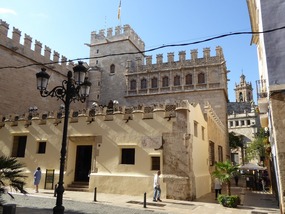
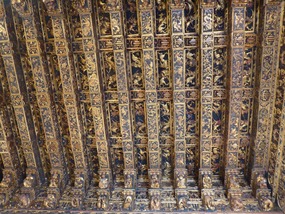
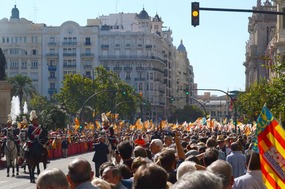
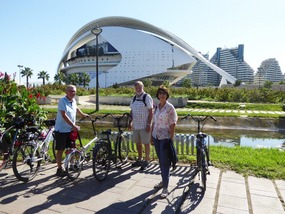

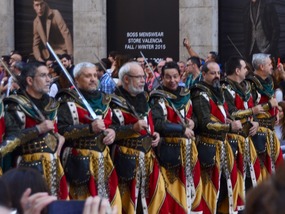
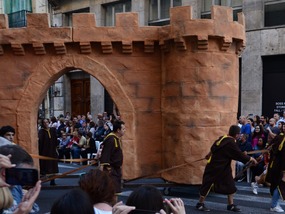
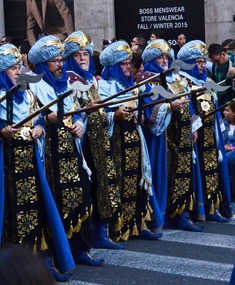
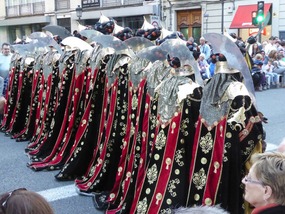
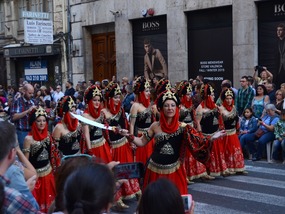
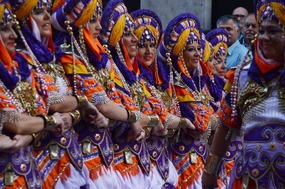
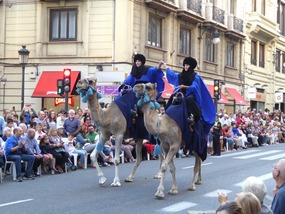
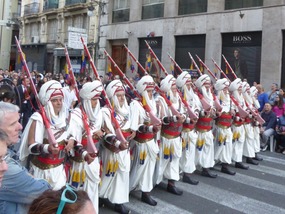
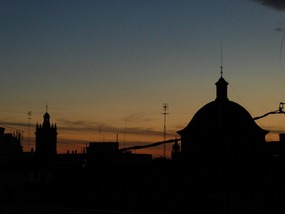



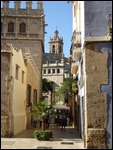
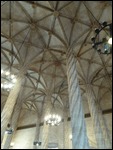
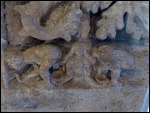
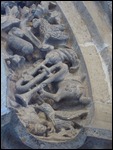
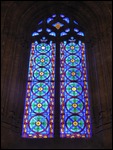
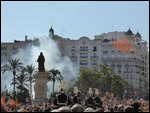
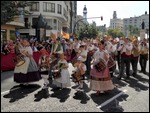
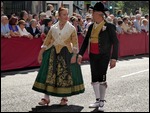
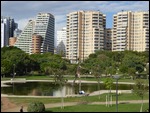
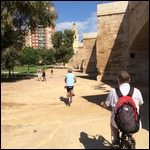
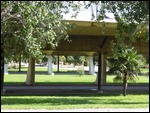
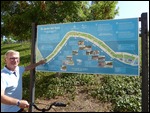
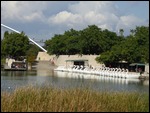

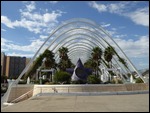
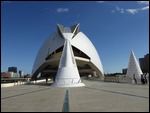
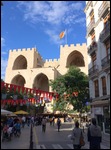
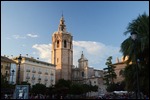
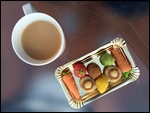
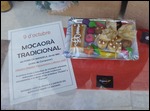
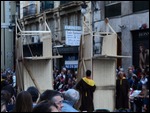
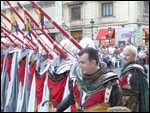
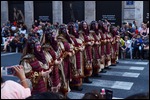
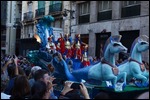
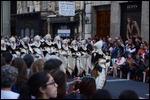
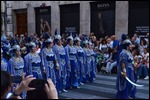
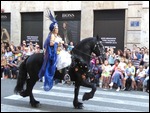

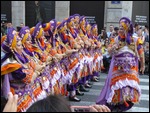
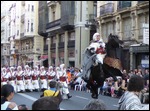
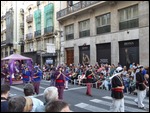
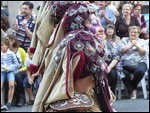
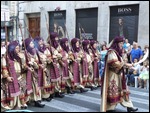
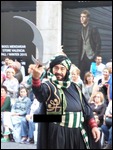
2025-05-23